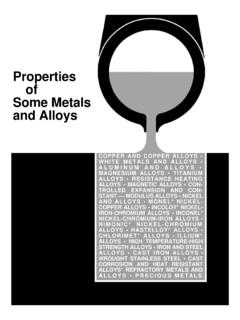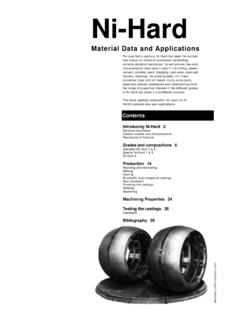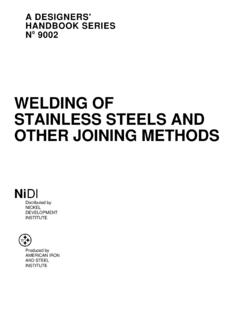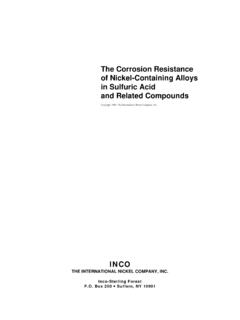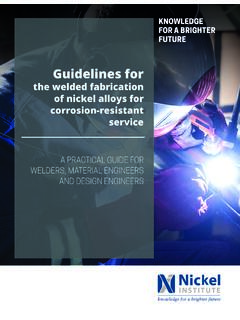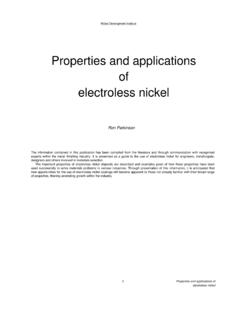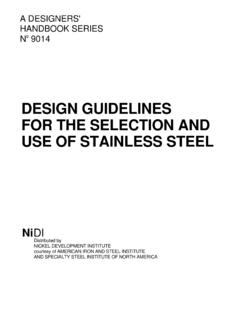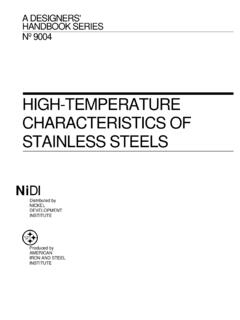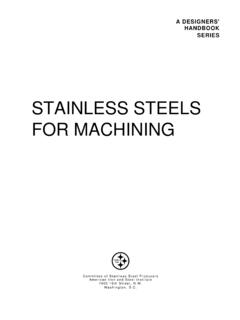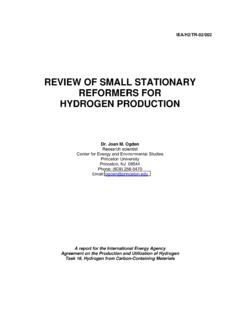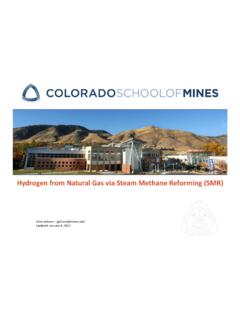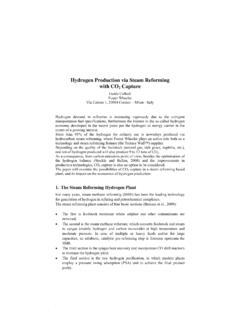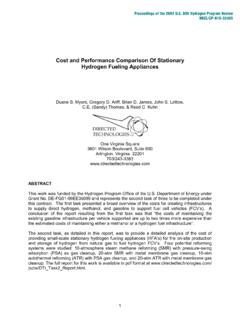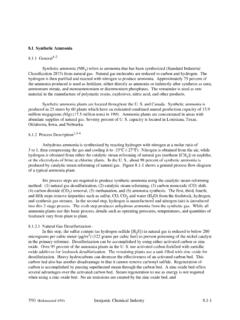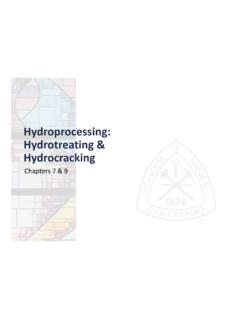Transcription of Stainless Steels in Ammonia Production - Nickel Institute
1 Stainless Steels in Ammonia ProductionCommittee of Stainless Steel Producers American Iron and Steel Institute Washington, CONTENTS INTRODUCTION .. 4 PROCESS DESCRIPTION .. 5 CORROSIVES IN Ammonia PROCESSES .. 5 CONSIDERATIONS FOR SELECTING Stainless Steels .. 6 Desulfurization of Natural Gas .. 6 catalytic Steam reforming of Natural Gas .. 6 Carbon Monoxide Shift .. 8 Removal of Carbon Dioxide . 10 Methanation .. 11 Synthesis of Ammonia .. 11 Turbine-Driven Centrifugal Compression Trains.
2 14 Stainless Steels .. 15 Metallurgical Structure .. 16 High-Temperature Mechanical Properties .. 16 Thermal Conductivity .. 20 Oxidation Resistance .. 21 Sulfidation Resistance .. 22 REFERENCES .. 22 The Committee of Stainless Steel Producers acknowledges the help by Gregory Kobrin, Senior Consultant, Materials Engineering, DuPont de Nemours & Company in assembling data for this booklet. The material presented in this booklet has been prepared for the general information of the reader.
3 It should not be used without first securing competent advice with respect to its suitability for any given application. While the material is believed to be technically correct, neither the Committee of Stainless Steel Pro-ducers nor the companies represented on the Committee warrant its suitability for any gen-eral or particular use. 4 Approximately 12 elements are es-sential to plant growth. Of these, nit-rogen is the main nutrient and is re-quired in much larger amounts than any other element. Ammonia is the principal source of fertilizer nitrogen, and most of the Ammonia Production in the world is applied directly to the soil or used in the manufacture of urea and other important nitrogen- base fertilizers.
4 (1)* Because of am-monia's importance to human needs, it is considered to be one of the most valuable and most widely produced chemicals in the world. The Ammonia Production industry has grown by leaps and bounds since 1964, with Production in 1977 an estimated 17 million to 18 million short tons per year, about four tirnes that of 1960 ( million short tons). (2) Up until 1963, plant capacities ranged between 50 and 400 short tons per day, many using a multiplicity of parallel process systems, called multiple trains.
5 In 1963, the first 600-short-tons-per-day single-train am-monia plant came on stream. This represented the beginning of large-capacity, single-train plants and was the first to use centrifugal compres-sors driven by steam turbines to com-press synthesis gas to elevated pres-sures. (2) Between 1965 and 1970, many single-train Ammonia plants with capacities of 600 to 1000 short tons per day were built throughout the world. In recent years, larger plants have been commissioned, several with 1500 short tons per day capacity and one of 1700 short tons per day, ranked the largest in the world at pre-sent.
6 (2) With the advent of high-capacity single-train plants came increasing demands on materials of construc-tion. The process for making am-monia is considered to be only moderately corrosive, so considera-ble use is made of carbon and low-alloy Steels for vessels and piping. However, numerous applications have been found for the AISI 300 and 400 Series Stainless Steels because of their superior performance under a wide variety of process conditions, not only for original fabrication but for replacement equipment and piping as well.
7 For example, Stainless Steels are used in catalytic steam reforming because of resistance to oxidation, carburi-zation and nitriding at elevated temperatures; Carbon dioxide removal systems where piping and vessels are sub-jected to hot, aqueous solutions containing carbon dioxide at moderate to high velocities; Ammonia synthesis for superior performance in hot nitriding gases, resistance to hydrogen embrittle-ment and hydrogen attack, and ex-cellent toughness at low tempera-tures; Centrifugal turbomachinery where rotating and stationary components are subjected to erosion by high-velocity steam and corrosion by ammonium carbamate, CO and CO2; Coolers and condensers for resis-tance to corrosion and fouling by natural waters.
8 The purpose of this booklet is to identify the many applications of Stainless Steels in a typical process for manufacturing anhydrous am-monia. *Numbers in ( ) indicate reference. INTRODUCTION 5 PROCESS DESCRIPTION Anhydrous Ammonia is manufac-tured by combining hydrogen and nitrogen in a molar ratio of 3:1, com-pressing the gas and then cooling it to about 27 F ( 33 C). Nitrogen is obtained from air. Hy-drogen is produced from a feedstock by one of the following processes; catalytic steam reforming of natu-ral gas or naphtha; Partial oxidation of heavy hydro-carbons (oils, distillates); Cryogenic recovery from petroleum refinery gases or other cracking operations; Gasification of coal or coke.
9 Currently, a high percentage of world Ammonia Production (an esti-mated 70 to 80%) uses hydrogen produced by catalytic steam reform -ing operations, with natural gas (methane) as the primary feedstock. As a result, the following process de-scription is limited to Ammonia pro-duction by catalytic steam reforming of natural gas, using six basic 1. Desulfurization of natural gas 2. catalytic steam reforming of natural gas 3. Carbon monoxide shift 4. Removal of carbon dioxide 5. Methanation 6.
10 Synthesis of Ammonia . The first, third, fourth and fifth steps are designed to remove im-purities such as sulfur, carbon monoxide, carbon dioxide and water from the feed, hydrogen and syn-thesis gas streams. In the second step, hydrogen is manufactured and nitrogen is introduced into the pro-cess. The sixth step produces anhydrous Ammonia from synthesis gas. All Ammonia plants use this basic process, although process condltions such as temperatures, pressures and flow rates vary from plant to plant.
